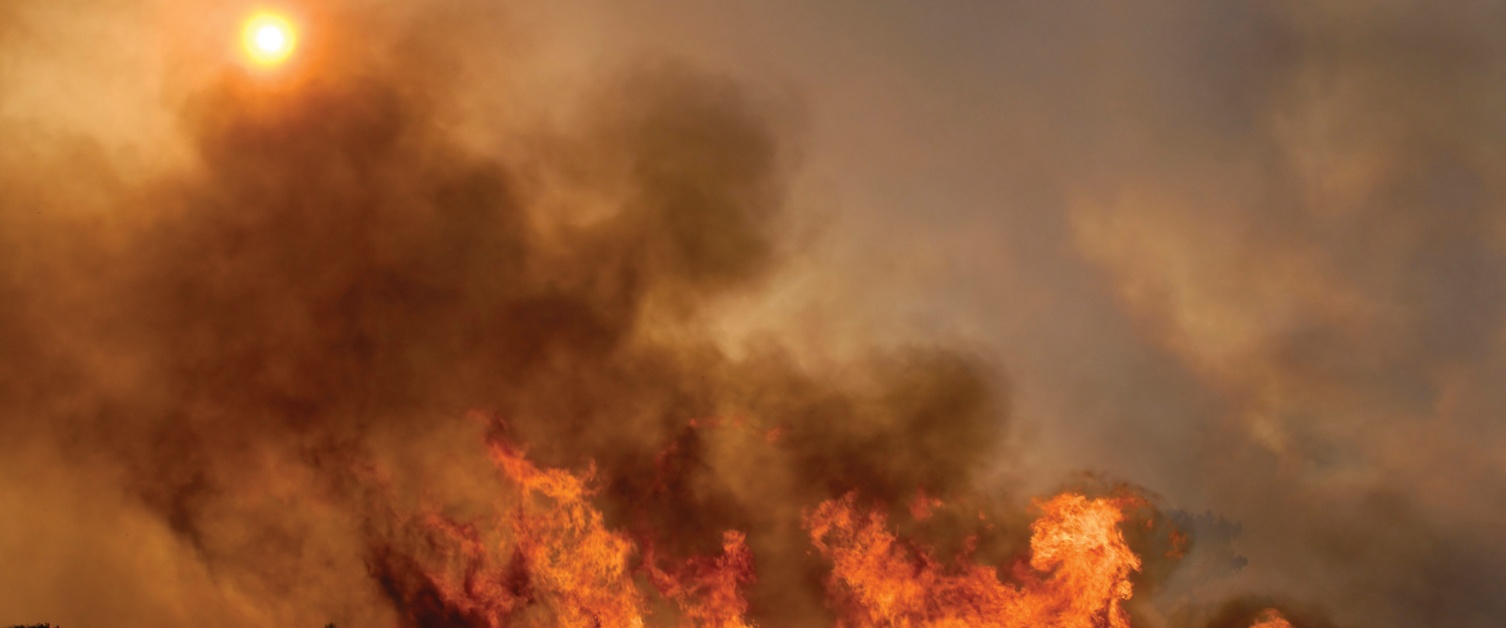Smoke Gets in Your Solar Energy (March)
- By AMS Staff
- Aug 14, 2023
10%–30%—The amount that California’s solar power production during peak hours decreased following wildfires in the state in September 2020, due to smoke darkening the sky. As a result, solar energy forecasts significantly overestimated the power generated by the sun. New research published in Environmental Research Letters utilized data on solar irradiance and energy production as well as a numerical weather prediction model to show that “wildfire smoke can have a substantial and negative impact on solar energy production in areas near major wildfires,” explains lead author Timothy Juliano of NCAR. “This is something that utilities should keep in mind when wildfires occur.” Juliano and colleagues compared solar energy output following the peak of the fires (7–16 September 2020) to output during the same period from the previous two years, and also analyzed ground station data of incoming solar radiation. They found the 10%–30% reduction in energy production occurred between noon and 4 p.m. on days with heavy wildfire smoke, but a reduction of less than 7% on days when wind blew much of the smoke out of the region. Their research also showed that on the smokiest days, solar energy production was on average 27% lower than what was forecast, and as much as 50% lower than forecasts in the late afternoon and evening, when energy is in highest demand. Juliano and colleagues were able to more accurately predict the magnitude and timing of solar irradiance by including smoke data in NCAR’s Weather Research and Forecasting-Solar model. [SOURCE: NCAR/UCAR]
Photo credit: iStock.com/ruig
